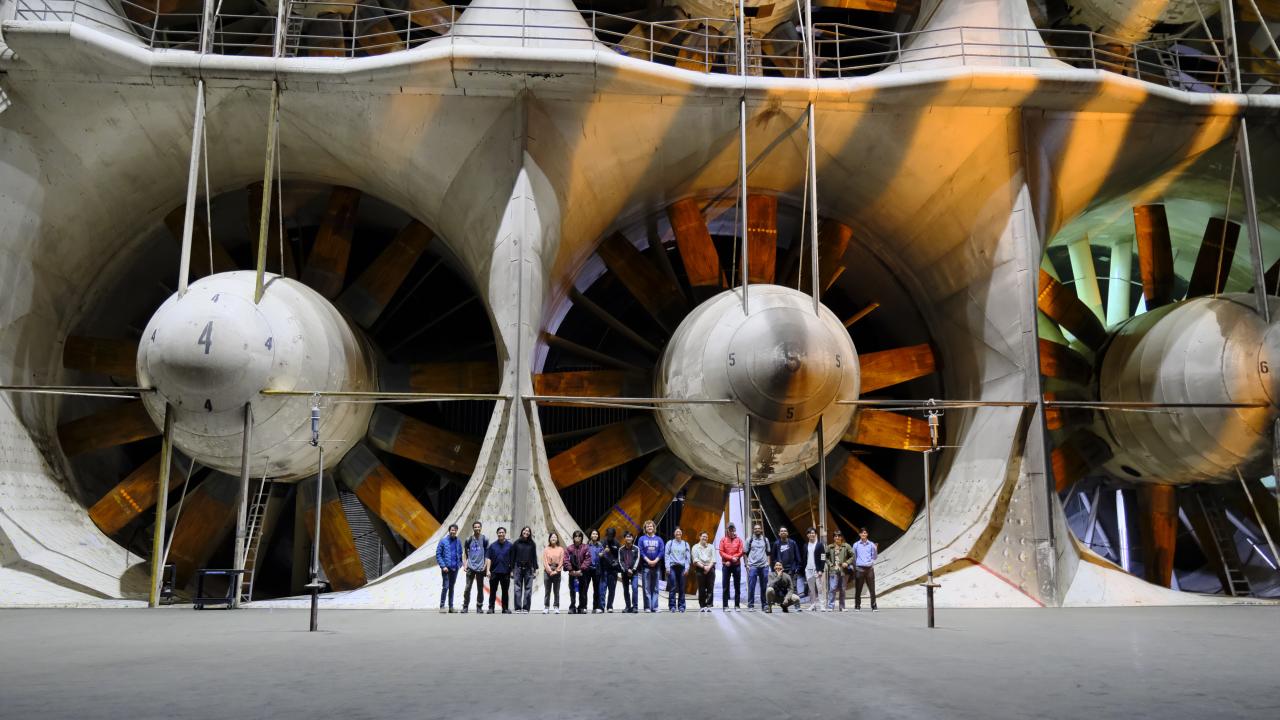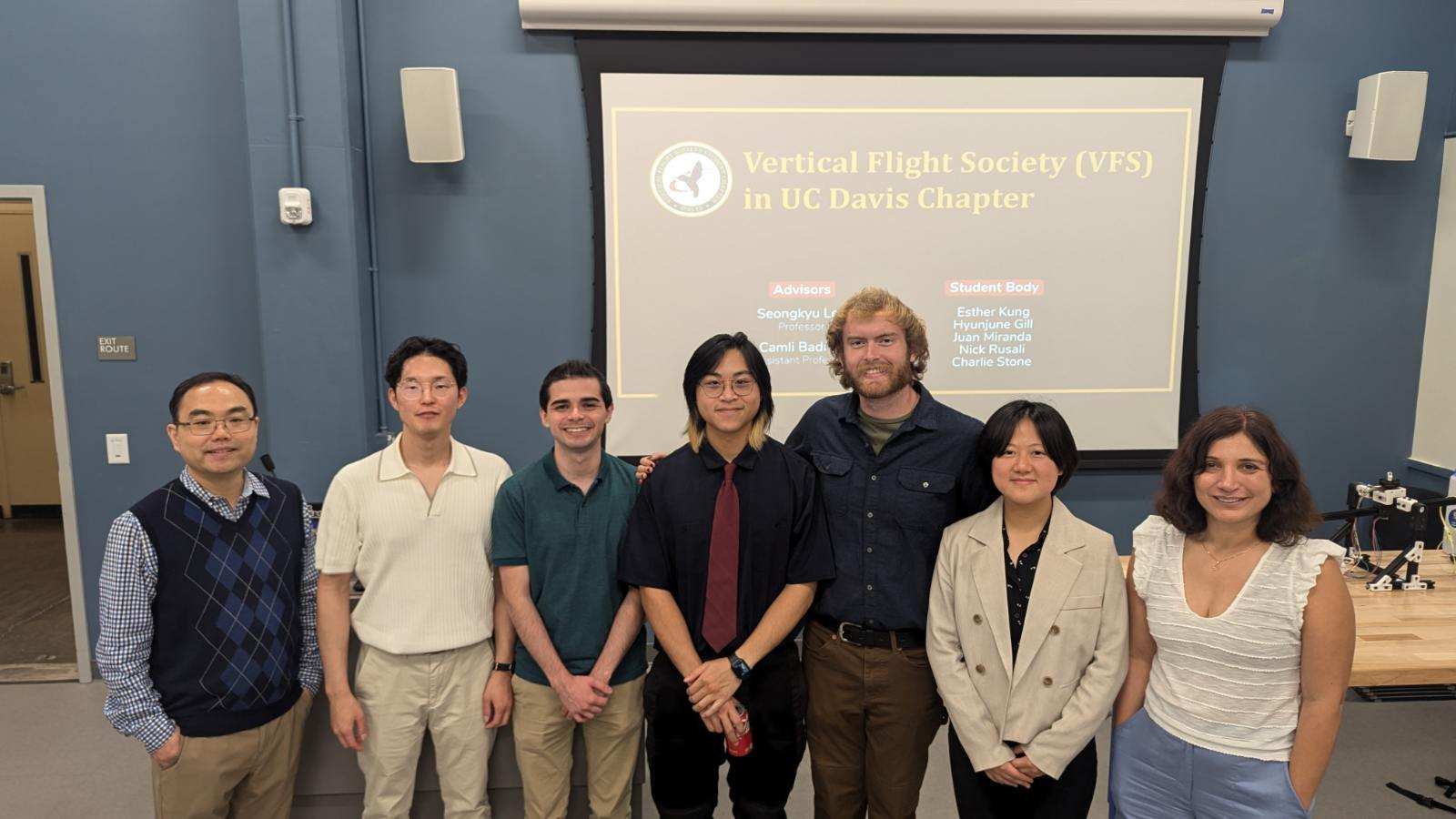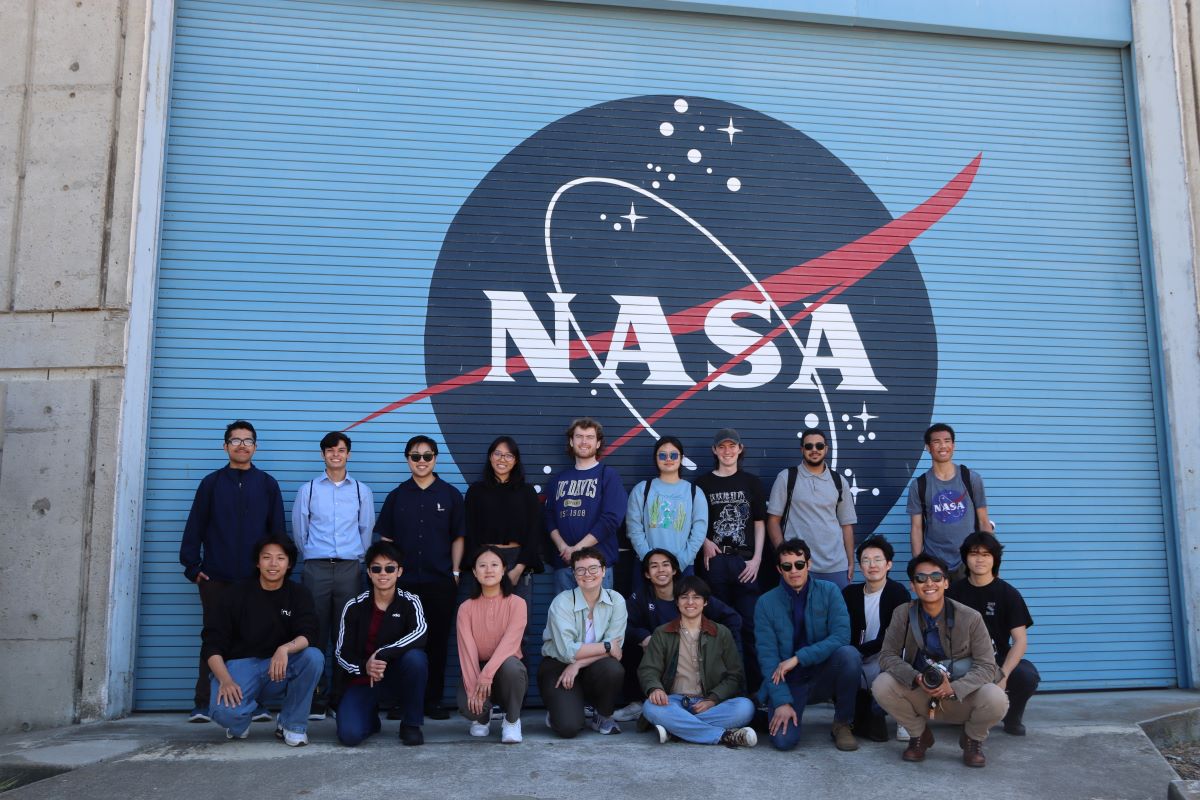
UC Davis Students Soar with Vertical Flight Society
Engineers, scientists and aviation enthusiasts are increasingly focused on vertical takeoff and landing, or VTOL, vehicles — such as helicopters, drones, and emerging air taxis — as these technologies become more mainstream and promise to revolutionize transportation. Forbes recently speculated that autonomous VTOL aircraft might be the next technology that could have “transformative impact on entire sectors of the economy and our everyday lives,” on par with smartphones.
With vertical flight technology rapidly gaining momentum, the University of California, Davis, launched its own chapter of the Vertical Flight Society, or VFS, in Fall 2024 to help students navigate and contribute to this evolving field.
Building Lift
Professor of Mechanical and Aerospace Engineering Seongkyu Lee was eager to bring the Vertical Flight Society to UC Davis, inspired by his own experience with the organization during his Ph.D. studies at Pennsylvania State University. At the time, the organization was known as the American Helicopter Society — a name it held until 2018. Lee wanted his students to benefit from the same educational opportunities, professional network and resources that had shaped his own academic journey.
“The Vertical Flight Society was established in response to the rapid growth of the vertical flight industry and market,” said Lee, whose research focuses on the aerodynamics and noise characteristics of rotorcraft. “It has expanded significantly, drawing participation from industry partners and government agencies alike. This is the right time for our students to learn about vertical flight vehicles. Through education and hands-on experience, they can be well prepared to pursue careers in this evolving field after graduation.”
Vertical flight presents numerous opportunities for improving transportation efficiency, including the development of air taxis, shorter and more direct flight paths, reduced maintenance costs and lower noise levels, according to Lee. As research in this field becomes increasingly important, engaging new students is crucial to advancing innovation. When launching the UC Davis chapter of the Vertical Flight Society, Lee recruited third-year aerospace science and engineering student Esther Kung to serve as the club’s founding president.

“I’ve always been passionate about planes,” Kung said. “One summer, I stumbled upon rotorcraft and the more I looked into it, the more opportunities I found. I really wish more people around me knew about it so we could collaborate and have more ideas.”
Kung has worked on the comprehensive design of remote-controlled fixed-wing aircraft and led an independent student team on a conceptual tilting design before becoming the founding president of the club. Kung is currently involved in researching planetary rotorcraft aerodynamics and developing rotorcraft design and analysis tool chains as an intern at NASA Ames.
The vice president of VFS is Hyunjune Gill, a Ph.D. candidate in mechanical and aerospace engineering. Gill became interested in vertical flight when he joined Lee’s lab as an undergraduate student researcher. Gill, who started working on rotor noise, appreciates the collaborative aspect of the club.
“We share information, like recent research and recent findings,” he said. “I really enjoy being a part of it.”
Other board members, Charlie Stone and Nicholas Rusali, are undergraduate researchers at Davis Applied Aerodynamics Lab led by Assistant Professor of Mechanical and Aerospace Engineering, Camli Badrya, who also assists with VFS.
Connecting Students to Sky-High Industry
VFS works to bring both new students and a clearer focus to the vertical flight field and the ever-growing opportunities that it offers. With urban air mobility companies like Archer, Wisk and Joby (led by UC Davis engineering alum JoeBen Bevirt) in Northern California, this student chapter creates relevant experiences for its members, equipping them for promising careers within reach.
“The goal of the VFS student club is to help students gain hands-on experience, deepen their knowledge of vertical flight and build connections with industry and government,” said Lee.

To help achieve those goals this year, the club hosted weekly meetings to discuss vertical flight concepts, heard talks from guest speakers like NASA Ames aerospace engineers Natasha Schatzman and Hanbong Lee; Giovanni Droandi, the aerodynamics lead at Archer; and Sven Schmitz, an associate professor of aerospace engineering at Pennsylvania State University. The group also toured the NASA Ames Research Center.
The board plans to continue to foster knowledge and expertise in students by participating in the VFS student design competitions and attending more conferences.
Kung is an early testament to what VFS can provide for a student, securing her NASA Ames internship via connections made through the VFS student chapter events.
“My focus when I come back from NASA’s aeromechanics branch is to use my experience to create a framework for the design competition that our student chapter can carry on for the years to come and open up ways for more undergraduates to be involved in the rotorcraft field,” said Kung. “Personally, I have been able to connect with graduate students and gained work experience to see the tangible applications of vertical flight research and make an informed decision about my career post-graduation, and I hope to pass these opportunities to future members too.”
Gill has been impacted in several meaningful ways through his involvement with VFS. In May of this year, he had the opportunity to attend the VFS Annual Forum in Virginia Beach, Virginia, where he presented his research on rotorcraft noise and brought back valuable insights to share with other club members. He has also been able to mentor undergraduate students, passing on both his knowledge and his passion for vertical flight.
“You get a lot of support by being in this club — not just academically or for your career, but personally as well,” said Gill. “The support and the lasting connections you build here are incredibly valuable.”
